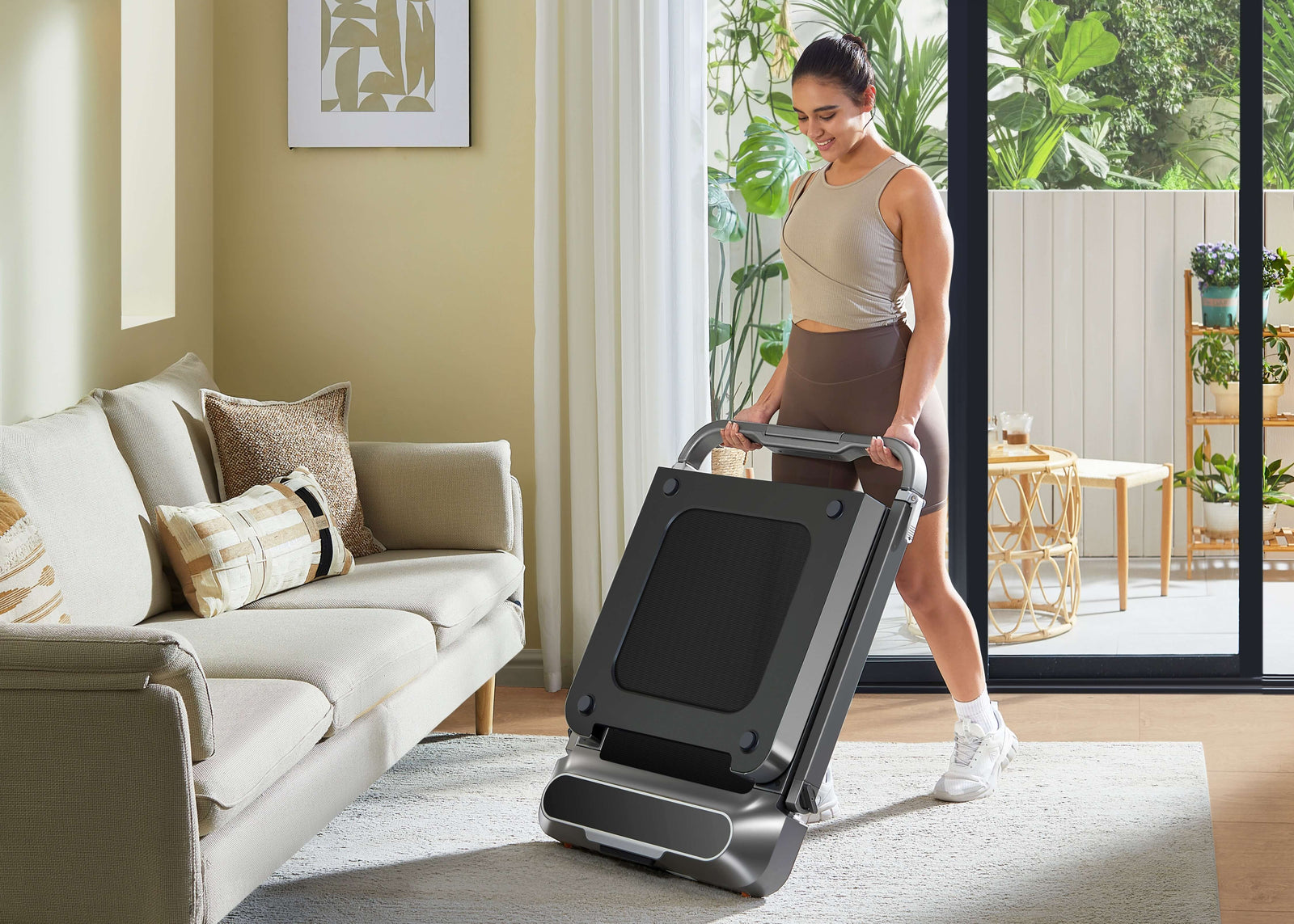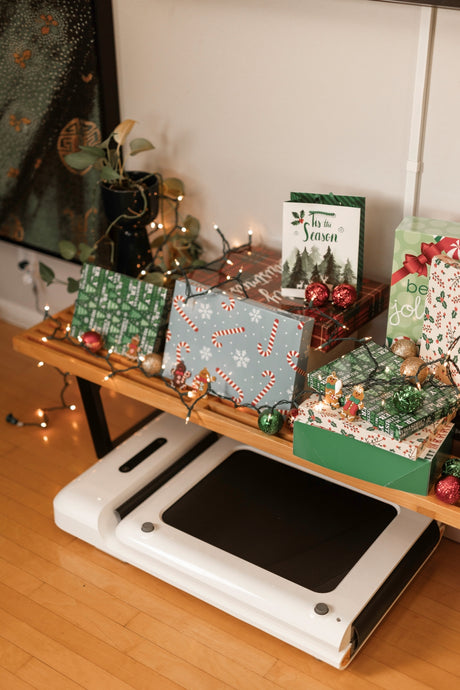Bringing the gym experience home has never been more appealing, particularly in the UK where the famously unpredictable weather can turn an outdoor jog into a rain-soaked gamble. As more people seek consistent ways to stay active without leaving the house, the treadmill has become a popular solution. But with so many models on the market, ranging from slim under desk walkers to full gym grade machines, the sheer choice can feel overwhelming. So, what treadmill is truly best for your home? The answer, much like a perfectly brewed cup of tea, depends on your personal taste, your lifestyle, and the space you have available. This guide breaks down the key factors to consider and highlights the best treadmill options designed for UK living, ensuring you can find a machine that fits your goals, your home, and your routine.
Define Your Fitness Needs
Before diving into specifications like horsepower and speed ranges, it’s worth pausing to identify your personal fitness goals. After all, the best treadmill for a casual lunchtime walker will look very different from the machine suited to a marathon trainee. Ask yourself: Are you training for the London Marathon, simply aiming to reach your 10,000 daily steps, or looking for a versatile machine that balances both walking and running? Your answer will narrow the field considerably.
Casual Walker/Desk User: If your main objective is to keep moving during work hours or enjoy a gentle stroll at home, focus on machines built for comfort and sustained low speed use. For this group, a quiet motor, slim design, and easy storage options matter more than top-end speed or steep incline settings. Under desk walking pads or compact folding treadmills are especially practical for smaller UK flats and home offices.
Jogger/Intermediate Runner: For those planning to jog regularly or run shorter distances, perhaps a couple of 5Ks each week, a sturdier frame and slightly more powerful motor become important. Look for at least 2.0 CHP (continuous horsepower) and a maximum speed of 2-14 km/h (around 7.5-8.7 mph). These features allow for comfortable jogging and occasional faster runs, while still keeping the machine compact enough for most UK homes.
Serious Runner/HIIT Trainer: If you thrive on intensity and want to replicate the gym experience, you’ll need a treadmill that can handle it. Prioritise a motor with 3.0 CHP or higher, a spacious running deck to accommodate longer strides, and cushioning that absorbs repeated impact during sprints. High maximum speeds (18-22 km/h) and responsive incline controls will allow for interval training and hill simulations. While these treadmills take up more room, they’re the best choice if you’re training hard and need long-term durability.

Measure Your Space
In the UK, space is often at a premium, whether you’re in a cozy London flat, a Victorian terrace, or a compact semi-detached house. It’s easy to get swept away by flashy specifications, only to realize the treadmill you’ve fallen in love with won’t actually fit through the doorway or leaves you with barely enough room to move around once installed. Thinking carefully about placement is just as important as picking horsepower or speed settings.
Where will it live?
Decide early on whether your treadmill will have a permanent place in a dedicated home gym or whether it needs to be tucked away between uses. A permanent fixture offers convenience, but for many households, reclaiming living space is essential. If storage is a priority, folding treadmills or walking pads that can slide under a sofa, bed, or into a cupboard will save you from daily frustration.
Check the dimensions
Always look at both the “in-use” and “folded” footprint of the machine. You’ll need enough clearance, ideally at least half a meter to a meter of space around the treadmill for safe entry, exit, and movement while exercising. This buffer is particularly important in narrow rooms or when placing the machine close to walls or furniture.
A Smart Solution for Compact Homes
For those living in small UK flats or shared spaces, ultra-compact options are a game-changer. The WalkingPad range stands out here, with models like the R1 Pro and the newer R2 folding completely in half for vertical or horizontal storage. These designs allow you to set up in seconds and stow away just as quickly, meaning you don’t have to compromise between fitness and floor space.
Key Features Worth Paying Attention to
When comparing treadmills, the technical specifications are where the real differences show. Knowing what to look for will help you separate a quality machine from an average one.
|
Feature |
Importance |
What to Look For |
|
Motor (CHP) |
Critical for longevity, especially for running. |
Walking: 1.5 CHP+ (Peak). Running: 2.5 CHP+ (Continuous Horsepower). |
|
Belt Size |
Determines running comfort and safety. |
Walking: 40-45 cm width. Running: 50 cm+ width and 140 cm+ length. |
|
Cushioning |
Protects joints, crucial for runners. |
Look for multi-layer decking and good shock absorption systems. |
|
Speed Range |
Must match your max pace. |
Walking/Light Jog: Up to 12 km/h. Running: Up to 16-20 km/h. |
|
Incline |
Adds workout intensity (mimics hills). |
Not essential for walking, but a must for varied running workouts. |
Compact Performance Tip: If you want high performance without a giant footprint, models like the WalkingPad X21 or X218 combine faster speeds and strong builds with the brand’s signature folding technology, ideal for UK homes short on space.

Set a Budget
Treadmills range from entry-level to high-end, so deciding what you’re willing to spend helps narrow the search.
£300 - £600 (Entry-Level)
Best for walking and light jogging. Compact folding models such as the WalkingPad R1 Pro or R2 are excellent value in this category, offering portability and convenience over advanced running features.
£600 - £1200 (Mid-Range)
Expect sturdier builds, stronger motors, and faster speeds. Machines like the WalkingPad X21 sit comfortably here, balancing running capability with an ultra-compact fold.
£1200+ (High-End)
Designed for serious runners, these treadmills deliver gym-quality power and larger running decks. Advanced features such as incline/decline and touchscreen controls are common. The WalkingPad X218, reaching speeds of 18 km/h, is a standout for those who want premium performance in a folding frame.
Recommended Treadmills for UK Homes
Here are the top picks from the WalkingPad range, tailored to modern British living where space and practicality matter:
|
Model |
Ideal User |
Key Feature for UK Homes |
Shop UK Link |
|
WalkingPad R1 Pro |
Dedicated Walkers, Under-Desk Use |
Slim profile, folds flat, stores under furniture. The ultimate space saver. |
|
|
WalkingPad R2 |
Walkers & Light Joggers (2-in-1) |
Enhanced stability and folding system, great for those who want a mix of casual and active use. |
|
|
WalkingPad X21 |
Intermediate runners, tech-savvy users |
Double-fold design with LED screen on the handle. Strong running performance in a compact body. |
|
|
WalkingPad X218 |
Serious runners |
Powerful motor, 18 km/h top speed, folding convenience. Ideal for those needing gym-level performance in smaller UK spaces. |
Practical Tips Before Buying
Before you click “add to basket,” it’s worth considering a few practicalities that will make a big difference to your treadmill experience.
Delivery and Installation: Think about the realities of moving a treadmill into your home. Traditional, non-folding models can be extremely heavy and awkward to maneuver, especially if you live in a classic British terraced house with narrow stairs or hallways. By contrast, WalkingPad models are delivered fully assembled, lighter in weight, and far easier to get into position, whether that’s a spare bedroom, a corner of the lounge, or even under your desk.
Noise Level: If you live in a flat, semi-detached, or have housemates, noise quickly becomes a deciding factor. A loud motor or thudding belt can annoy neighbors and family members, particularly if you like to train early in the morning or late at night. Brushless motors, which are featured in many modern treadmills such as the WalkingPad range, are designed to run far quieter while still delivering strong performance.
Warranty and Servicing: A treadmill is an investment, so don’t overlook the aftercare. Always check the warranty terms, how many years are covered for the motor, the frame, and individual parts. Just as important is knowing that servicing and support are easily accessible in the UK. Choosing a brand with reliable local customer service means that if something does go wrong, you won’t be stuck waiting weeks for an overseas solution.

FAQ
How wide a running belt do I need?
For walking or gentle under-desk use, a belt width of around 40 cm is usually sufficient. If you plan to jog regularly, look for at least 45 cm to give you a bit more room. For comfortable running, especially if you have a longer stride, 50 cm or wider is considered the standard, offering stability and confidence during faster sessions.
What is CHP and why does it matter?
CHP stands for Continuous Horsepower, which measures a treadmill motor’s ability to maintain power over long periods of use, not just in short bursts. This is especially important for runners, as a higher CHP rating means the motor can handle sustained speeds without overheating or wearing out prematurely. For light walking, 1.5-2.0 CHP is typically enough, but for jogging or regular running, look for at least 2.5 CHP or higher. Serious runners and HIIT trainers will benefit from 3.0 CHP+, ensuring smoother performance and longer machine lifespan.
Are folding treadmills stable enough for running?
In the past, folding treadmills were often criticized for being a bit wobbly, especially at higher speeds. However, modern designs have improved significantly, with reinforced frames, stronger locking mechanisms, and better shock absorption. High quality models, such as the WalkingPad X-series are engineered with stability in mind, making them perfectly safe for jogging and even full speed running. The key is to choose a treadmill with a solid frame, good weight capacity, and strong joint construction. As long as you buy a reputable brand, a folding treadmill can deliver the same stability and performance as a fixed model, while still saving valuable space in your home.
Conclusion
Selecting the best treadmill for your home in the UK comes down to balancing performance, budget, and space. By clearly defining your fitness goals, measuring your available room, and paying close attention to key features like motor strength, cushioning, and foldability, you can make a confident choice that matches your lifestyle. For everyday step goals and under-desk use, compact models like the WalkingPad R1 Pro fit seamlessly into smaller homes and offices. For those seeking a more robust running experience without sacrificing space, the WalkingPad X218 offers gym-level performance in a folding design. Whatever your preference, investing in the right treadmill ensures you’ll have a reliable fitness partner that keeps you moving year-round, rain or shine, north or south of the UK.
More Reading: What Is the Average Lifespan of a Treadmill?







